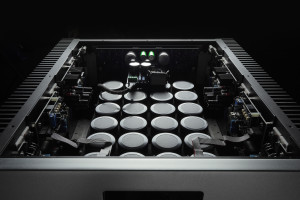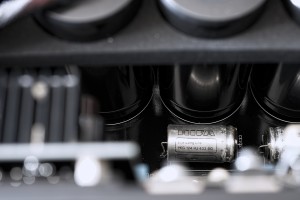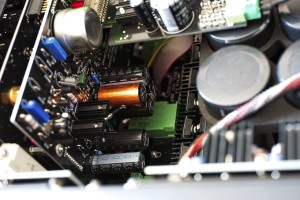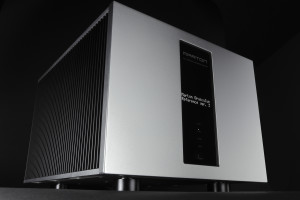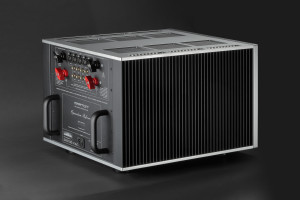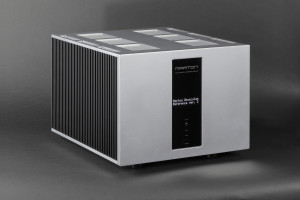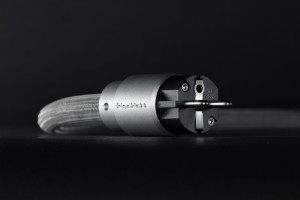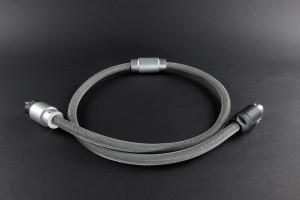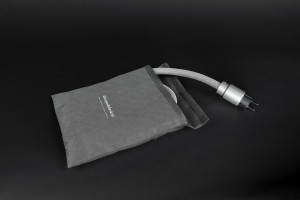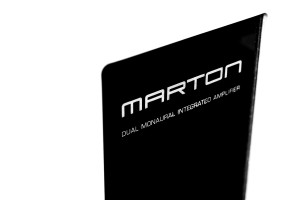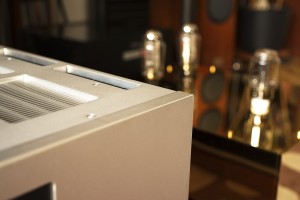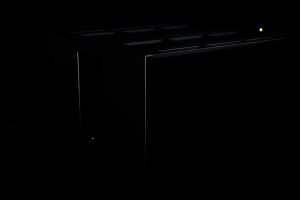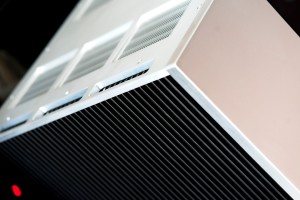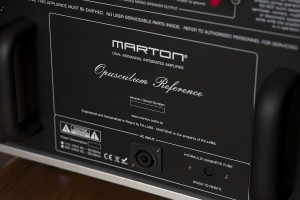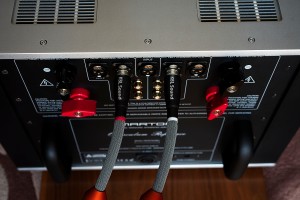One of the major events of the Audio Video Show 2018 in Warsaw was the launch of the latest design by Mr. Marek Knaga, the Marton Opusculum Reference 3 integrated amplifier. First of all, because of the brand’s well-deserved reputation that was built over the years with consecutive remarkable products. Secondly, because it was the first result of the cooperation between Marton and Gigawatt, another renown Polish brand. I was impressed and had to request a review sample, so here comes the world premiere review.
Introduction
Marton brand emerged already in the early 1990s. Right from the start it created a lot of buzz on the market. It was a period of a rapid development of the Polish audio industry, when many new brands and products saw the light of the day. Mr. Marek Knaga, the man behind Marton, set ambitious goals for himself. He didn’t plan to make yet another good sounding amplifier. He wanted to offer truly high end one designed and made in Poland right from the start. Most manufacturers enter markets with some decent, reasonably priced product(s), assuming that they have to build a name for themselves first. Only after attracting enough attention, being successful in the hi-fi area some of them take the next step into the world of high-end. Such a path makes a lot of sense. It is something totally different to be a DIY guy making great sounding devices for oneself or for a small group of friends and becoming an, even small-scale, manufacturer, facing real-life production and market challenges. Another matter is the knowledge and experience designers accumulate with each project. These are often a key to being able to develop high-end audio products.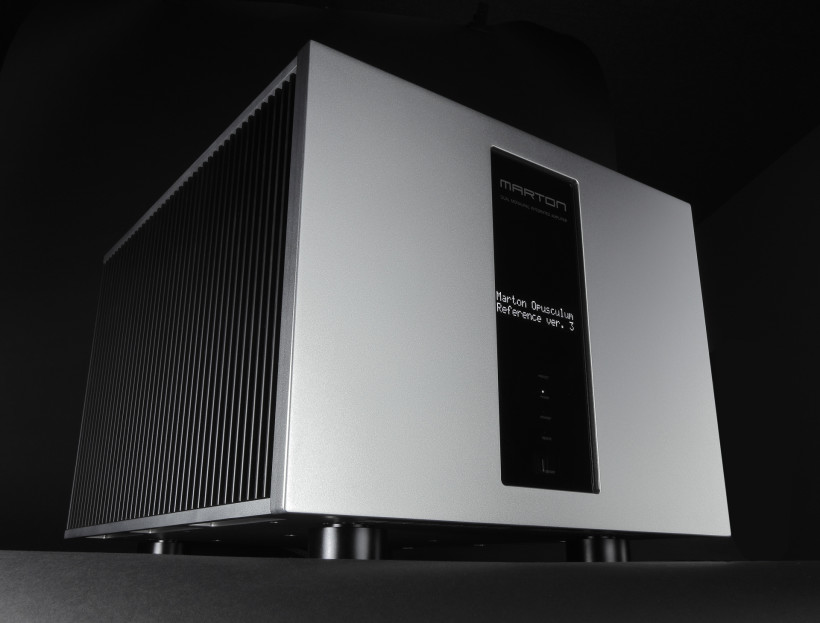 Mr. Marek Knaga took another path. His goal was to develop a neutral sounding amplifier offering top-notch performance. By neutral he meant one, that would amplify signal without changing it in any manner. After all that’s what a perfect amplifier should do – just amplify a signal without adding or loosing any information in the process. So instead of presenting products being consecutive steps to the ultimate goal he rather build on his already impressive knowledge and experience while developing his first Marton amplifier. The key to achieve the ambitious goal was not to rush the development process and not to push the product to the market until it was ready. It had to be properly built, refined, tweaked, benefiting from all upgrades Mr. Knaga could come up with first and delivering performance that would truly impress potential customers. So it took him quite a while to present his first amp but once he did those who had a chance to listen to it were seriously wowed.
Mr. Marek Knaga took another path. His goal was to develop a neutral sounding amplifier offering top-notch performance. By neutral he meant one, that would amplify signal without changing it in any manner. After all that’s what a perfect amplifier should do – just amplify a signal without adding or loosing any information in the process. So instead of presenting products being consecutive steps to the ultimate goal he rather build on his already impressive knowledge and experience while developing his first Marton amplifier. The key to achieve the ambitious goal was not to rush the development process and not to push the product to the market until it was ready. It had to be properly built, refined, tweaked, benefiting from all upgrades Mr. Knaga could come up with first and delivering performance that would truly impress potential customers. So it took him quite a while to present his first amp but once he did those who had a chance to listen to it were seriously wowed.
Mr. Knaga has kept the same approach ever since, hence despite the 20 years long history of the brand there have not been so many Marton models. Simply because developing and refining each and every one of them took a long time. As a consequence, Marton amplifiers were also never cheap, so only few could afford them. Among customers there were not only audiophiles, but also some, who used these amps as reference devices for their own audio-related work. For example, Mr. Andrzej Zawada, the man behind ESA brand and the fantastic Credo Stone model (among many others) has been using Marton in his reference system for both, pleasure and business, while developing his loudspeakers. I know he is not the only one in the audio industry who chose this brand’s product for his reference amp, which is yet another proof of a very high regard not only audiophiles, but also professionals keep Mr. Knaga’s amplifiers in.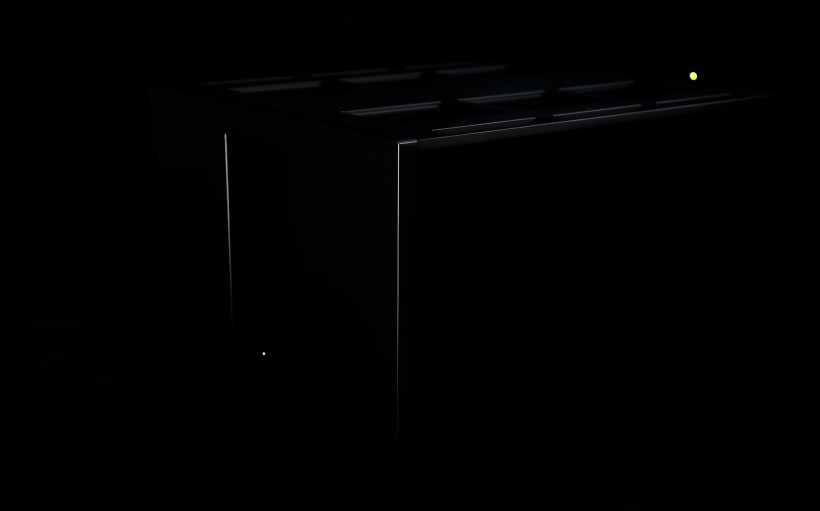 Marton amplifiers were always large in size and weighted a lot. Even though some of them featured a power supply in a separate chassis, the total weight was always the main obstacle in delivering such products to my place for a review. Hence, I’ve never had a chance to assess any Marton in my own system. Also, Mr. Knaga did not participate in the Audio Show (today’s Audio Video Show) in Warsaw often enough, so I did not get a chance to hear every one of his amps over the years. Last time I remember was already several years ago (I mean apart from 2018 appearance) and I spent a lot of time in his room. The reasons for my extended stay there were twofold. First, I loved the sound and that rarely happens during any show simply because the acoustic environment there is usually barely acceptable. I know that many (especially inexperienced) audiophiles don’t think about it, but a decent room’s acoustics is a key factor in any audio system’s performance. Even the best system in the world (not that there is one that I could point to) won’t be able to truly impress, to present its full potential in a poor sounding room. And yet, in a relatively small room, the Marton amplifier with accompanying system sounded really good, delivering (among other impressive features) excellent pace&rhythm. The other reason was a blues CD (I don’t even recall a title nor the artist) that I bought really cheap that day on the Show, that in this system sounded amazingly good. Hence Mr. Knaga, with whom we obviously share the love for blues, didn’t want me to leave with the CD as we spinned it again and again.
Marton amplifiers were always large in size and weighted a lot. Even though some of them featured a power supply in a separate chassis, the total weight was always the main obstacle in delivering such products to my place for a review. Hence, I’ve never had a chance to assess any Marton in my own system. Also, Mr. Knaga did not participate in the Audio Show (today’s Audio Video Show) in Warsaw often enough, so I did not get a chance to hear every one of his amps over the years. Last time I remember was already several years ago (I mean apart from 2018 appearance) and I spent a lot of time in his room. The reasons for my extended stay there were twofold. First, I loved the sound and that rarely happens during any show simply because the acoustic environment there is usually barely acceptable. I know that many (especially inexperienced) audiophiles don’t think about it, but a decent room’s acoustics is a key factor in any audio system’s performance. Even the best system in the world (not that there is one that I could point to) won’t be able to truly impress, to present its full potential in a poor sounding room. And yet, in a relatively small room, the Marton amplifier with accompanying system sounded really good, delivering (among other impressive features) excellent pace&rhythm. The other reason was a blues CD (I don’t even recall a title nor the artist) that I bought really cheap that day on the Show, that in this system sounded amazingly good. Hence Mr. Knaga, with whom we obviously share the love for blues, didn’t want me to leave with the CD as we spinned it again and again.
As regular Readers of my reviews in various magazines probably already know, it’s been my dream for a long time to one day have (if affordable for me) or at least put together a truly high-end Polish audio system. Back then, after the Audio Show, I noted to myself that such system should probably include a Marton amplifier. Later, however, Marton sort of disappeared, at least from my sights, so to speak. It was never really a front-page brand, partly because they didn’t offer a new product every few months, but rather every several years, but still. I didn’t see them on consecutive Shows, didn’t read any new reviews, didn’t hear any news. That is, until the Audio Video Show 2018 in Warsaw. Already some time before the Show, same as probably many of you, I’d learned that Marton started close cooperation with P.A. Labs, the owner of the renown brand Gigawatt, whose power conditioners, power strips and other power related products are highly valued by audiophiles around the world. That is one of the most successful Polish audio brands in terms of conquering foreign markets. As it reads in the press release the idea of combining efforts between Gigawatt and Marton floated for almost ten years and finally in 2015 the decisions were made and ultimately realized in 2018. Ever since these two brands, Gigawatt and Marton, joined their forces, hence the new amplifier, Marton Opusculum Reference 3 is a fruit of combined knowledge, experience and efforts of brilliant people from both companies.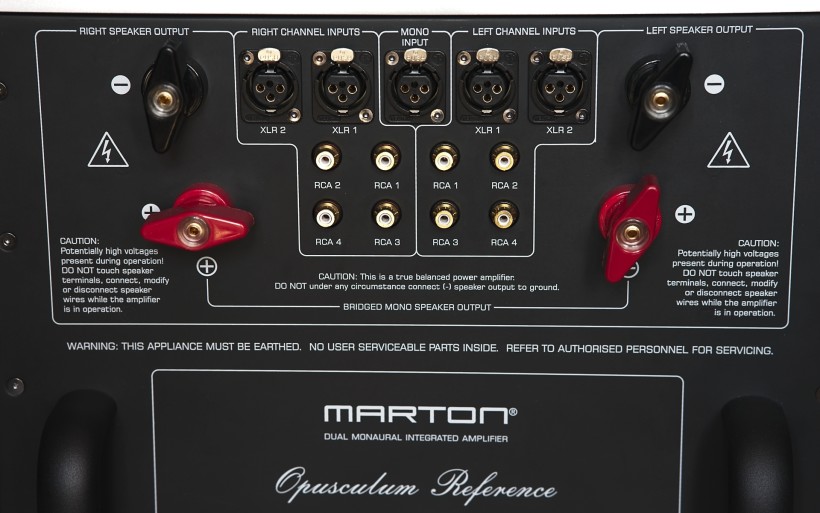 One of the reasons to acquire additional brand(s) is to combine efforts, knowledge and experience of people behind them. That was the main purpose also in this case. Gigawatt has been making ones of the best power products in the world for years. I have been using some of them for quite a while now, starting with the in-wall LC-Y cable that runs from my fuse box directly to wall outlets (two of them also made by Gigawatt) used exclusively for my audio system. This simple change did a lot of good for my system being surely the best upgrade, price-performance-wise, I’ve ever made. I’ve also being using the Gigawatt PF2-mk2 power strip with their LC-3 power cable for years whenever I ran out of outlets in my power conditioner. Last but not least, I recently added to my system a remarkable power conditioner by this Polish brand, the PC-3 SE Evo+, that I got for a review and which simply outperformed and thus replaced the previous one. All of these components were carefully selected for their performance but since they also happened to be made in Poland, I knew they could, in future, become parts of my dreamed Polish high-end system (it was a bonus feature, not a decisive factor though, as the performance always come first when I select items for my reference system). Anyway – the Gigawatt’s Adam Szubert and his teams’ expertise in power products for high-end systems as well as in anti-vibration aspects of chassis designs were something that’s Marton’s amplifiers, despite already being remarkable products, would still benefit from.
One of the reasons to acquire additional brand(s) is to combine efforts, knowledge and experience of people behind them. That was the main purpose also in this case. Gigawatt has been making ones of the best power products in the world for years. I have been using some of them for quite a while now, starting with the in-wall LC-Y cable that runs from my fuse box directly to wall outlets (two of them also made by Gigawatt) used exclusively for my audio system. This simple change did a lot of good for my system being surely the best upgrade, price-performance-wise, I’ve ever made. I’ve also being using the Gigawatt PF2-mk2 power strip with their LC-3 power cable for years whenever I ran out of outlets in my power conditioner. Last but not least, I recently added to my system a remarkable power conditioner by this Polish brand, the PC-3 SE Evo+, that I got for a review and which simply outperformed and thus replaced the previous one. All of these components were carefully selected for their performance but since they also happened to be made in Poland, I knew they could, in future, become parts of my dreamed Polish high-end system (it was a bonus feature, not a decisive factor though, as the performance always come first when I select items for my reference system). Anyway – the Gigawatt’s Adam Szubert and his teams’ expertise in power products for high-end systems as well as in anti-vibration aspects of chassis designs were something that’s Marton’s amplifiers, despite already being remarkable products, would still benefit from.
The Audio Video Show 2018 presentation revealed the first, but surely not the last, fruit of this cooperation, the Marton Opusculum Reference 3 integrated amplifier. As the number suggest that’s another version of the highly regarded Opusculum Reference amp. Those who visited the room during the Show could see two such beasts in a system with J.Sikora turntable, dCS digital front end and Wilson Audio Alexia II speakers. I called it a beast because of the size and weight – that’s almost a 100 kg amp in a huge single chassis, hence my first thought was: another Marton they will surely not be willing to deliver to my place. That’s what I do during shows – whenever I like what I see, or first of all hear, my first thought is always: can I have it delivered to my room for a review? That’s how I’m wired because I still do love discovering new, exciting, great sounding components despite the fact, that I’ve already reviewed probably over a thousand of them.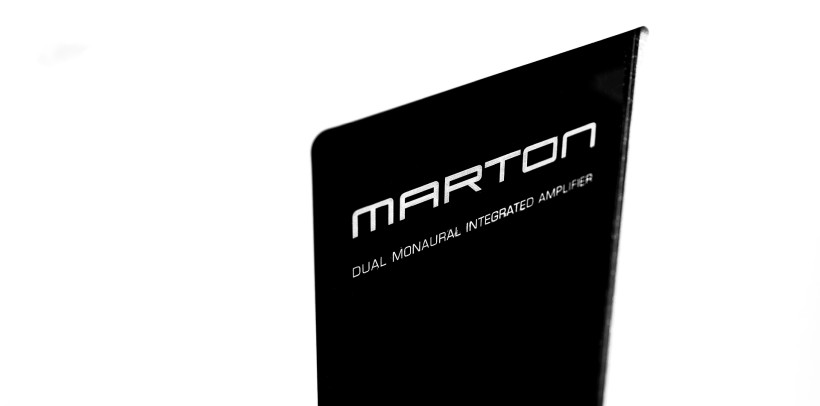 As such it is a solid-state integrated amplifier capable of delivering 2×400 W @ 8Ω with the first 50W in the Class A. With a combination of buttons on its remote it can be turned into a stereo power amplifier bypassing the preamplifier section. The Marton Opusculum Reference 3 features a power supply with over 500,000 μF total capacity and a huge, noiseless over 2,5kW power transformer. From the specs it’s clear that it can drive virtually any loudspeakers almost effortlessly. And yet, there is another option – one can bridge it for monaural operation with an astounding output of 1600 W! So in case one Opusculum Reference 3 isn’t enough for you, two are always an option. Although, if you really need even more power you should probably wait for another Marton product that is in development phase (and close to finalization from what I’ve been told), the preamplifier/monoblocks set that is one of the products in the pipeline (next to a smaller and somewhat less expensive integrated).
As such it is a solid-state integrated amplifier capable of delivering 2×400 W @ 8Ω with the first 50W in the Class A. With a combination of buttons on its remote it can be turned into a stereo power amplifier bypassing the preamplifier section. The Marton Opusculum Reference 3 features a power supply with over 500,000 μF total capacity and a huge, noiseless over 2,5kW power transformer. From the specs it’s clear that it can drive virtually any loudspeakers almost effortlessly. And yet, there is another option – one can bridge it for monaural operation with an astounding output of 1600 W! So in case one Opusculum Reference 3 isn’t enough for you, two are always an option. Although, if you really need even more power you should probably wait for another Marton product that is in development phase (and close to finalization from what I’ve been told), the preamplifier/monoblocks set that is one of the products in the pipeline (next to a smaller and somewhat less expensive integrated).
Even though it seemed hopeless I did talk to the Gigawatt and Marton guys expressing my will to review this impressive amplifier. To my surprise they said: OK, we will think about the ways to organize it. It took another few months before the Opusculum Reference 3 actually got here but logistics was not the reason. Remember, I told you that Mr. Knaga always took a long time refining each of his products. Also this time, even after this first presentation during Audio Video Show 2018 in Warsaw the team behind Opusculum Reference 3 found some ways to improve this design. Finally, using a specialized transport company, manufacturer delivered a review unit to my place. As the team behind this amplifier treated the very first review of their „baby” very seriously they all, Mr. Marek Knaga, Adam Szubert and Piotr Sadulski came with the amplifier to help me set it up, answer my questions and… to hear for themselves the (initial) performance of the beast.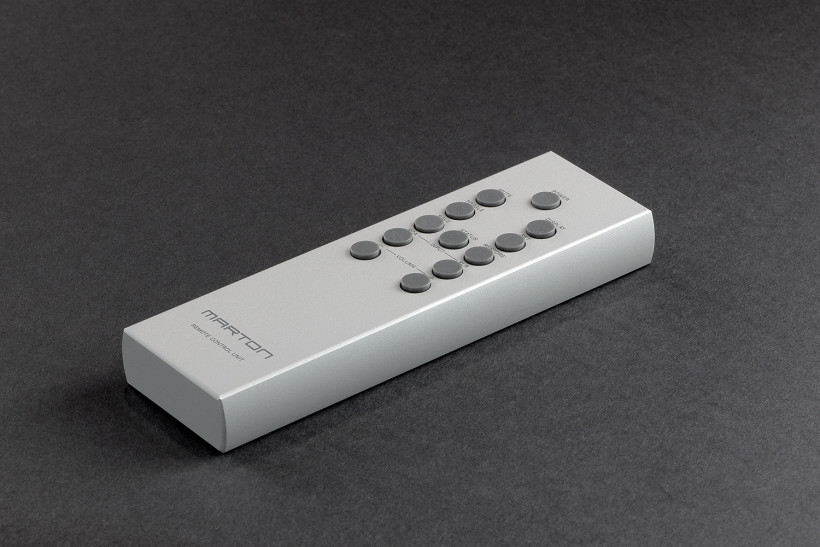
To have options during the review of the mighty Opusculum Reference 3 I made sure I would have four pairs of speakers to my disposal at the time. Apart from my trusted Ubiq Audio Model One Duelund Edition and the wonderful GrandiNote MACH4 I also asked manufacturer to deliver once more the fabulous ESA Credo Stone that were the best Polish loudspeakers I’d ever reviewed and ones of the best regardless of country of origin. I also requested that Soundclub, the Polish distributor of Marten speakers (and Gigawatt distributor), would deliver one of their models, as I keep them in a very high regard. Ultimately they brought a pair of the fantastic Mingus Quintet floor-standers. It so happened that at the same time I also had at my disposal the new J.Sikora KV12 Kevlar tonearm installed on my deck, that came for a review, the LampizatOr’s flagship Pacific DAC and a few additional sets of cables. In other words, I was fully equipped to check out what the Marton Opusculum Reference 3 was capable of in terms of its performance.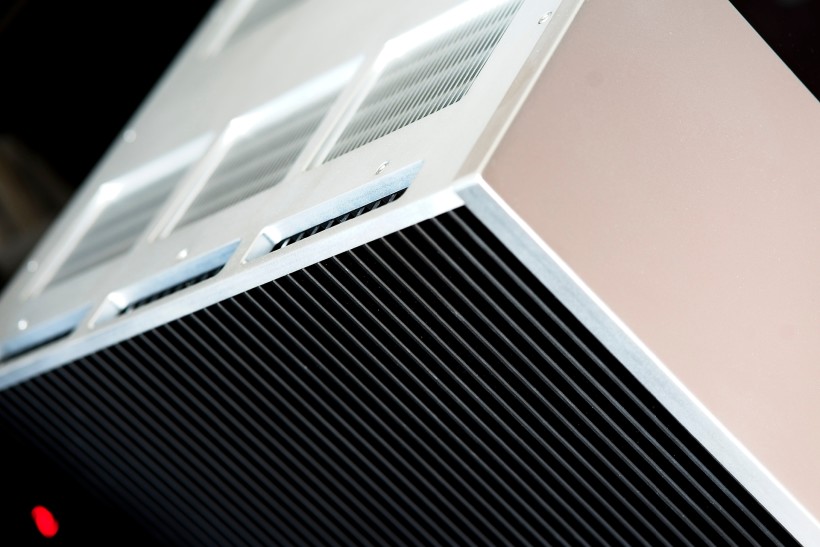
Design
As already mentioned, the Marton Opusculum Reference 3 is a huge solid-state amplifier. It’s chunky chassis measures 475x565x382mm weighing 95 kg (!) and it’s made of non-magnetic materials that shield electronic circuits from EMI and RFI. All the elements of the chassis are custom-CNC-machined. The whole chassis rests of the GigaWatt Rolling-Ball Isolation System feet. The device is operated exclusively by remote control – the are no buttons or knobs on the faceplate. Hence the thick, aluminum front features only a very nice looking OLED display and a few LED indicators. Both sides (radiators) as well as a number of slots in the top cover allow for proper ventilation and heat dispersion, which is a must considering that the device can get quite hot during operation. The rear panel features two chunky handles, but considering the weight of the device don’t even try to move it yourself! There are six stereo inputs: two balanced ones (XLR) and four unbalanced (RCA), as well as one mono XLR input for monaural operation. The reviewed version included a PowerCon power inlet and a custom 20A GigaWatt LS-2 EVO power cable.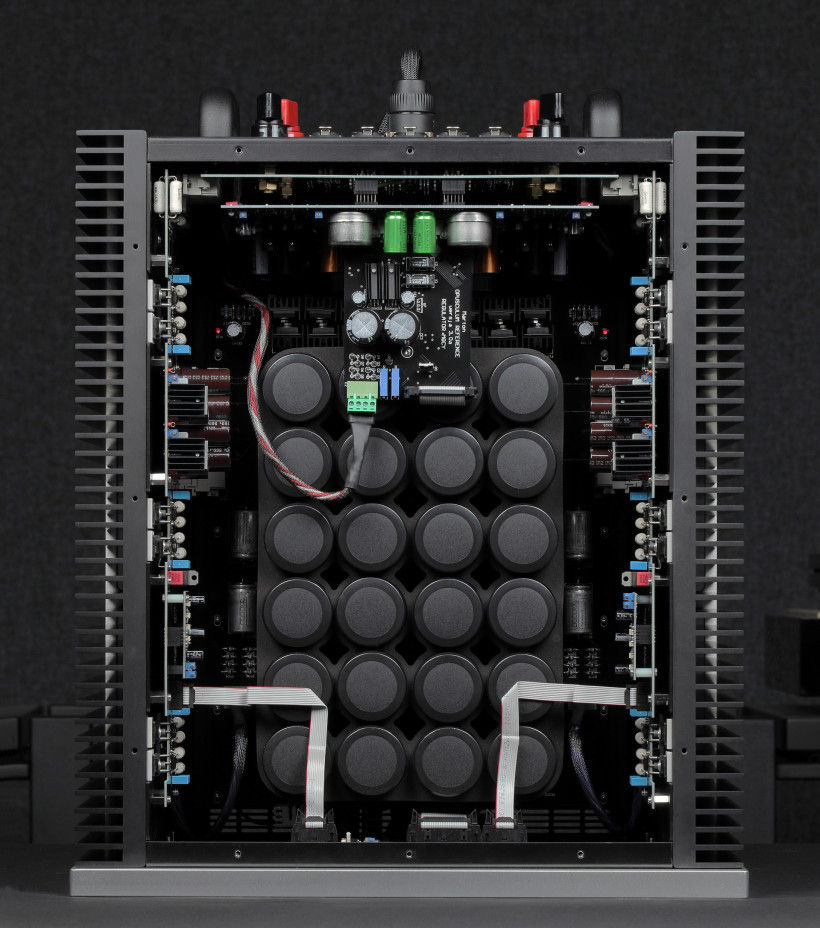 As it reads in company’s materials, one of the biggest challenges any amplifier must face to offer top performance is an ability to convey short musical impulses with a large energy peaks. To face that challenge an amplifier must be capable of delivering short high current impulses to the speakers, hence the Opusculum Reference 3, as all previous Marton amps, is a high current, dual-mono design. It allows it to drive even loudspeakers whose impedance drops very low. One of the key elements is a top quality power supply. It features total capacity of 500000 uF, several separate low-noise regulated power supplies. The whole design of the power supply allows a free energy flow to the capacitors in the output stage. Another key element is a huge custom 2500VA power transformer, that is mechanically isolated from the main chassis. To maximize isolation from internal and external vibrations its own housing is filled with custom vibration damping material. There is also a separate toroidal transformer for all the digital and control circuits.
As it reads in company’s materials, one of the biggest challenges any amplifier must face to offer top performance is an ability to convey short musical impulses with a large energy peaks. To face that challenge an amplifier must be capable of delivering short high current impulses to the speakers, hence the Opusculum Reference 3, as all previous Marton amps, is a high current, dual-mono design. It allows it to drive even loudspeakers whose impedance drops very low. One of the key elements is a top quality power supply. It features total capacity of 500000 uF, several separate low-noise regulated power supplies. The whole design of the power supply allows a free energy flow to the capacitors in the output stage. Another key element is a huge custom 2500VA power transformer, that is mechanically isolated from the main chassis. To maximize isolation from internal and external vibrations its own housing is filled with custom vibration damping material. There is also a separate toroidal transformer for all the digital and control circuits.
All electronic circuits were assembled on PCBs made of a 2-3 mm thick laminate and a 120um copper layer covered with precious metal ensuring maximum speed of current propagation. All connections are soldered using a tin and silver alloy. The driver section of the output stage features separate power supplies powered from separate transformer windings. Despite the fact of using the highest quality Gigawatt’s internal wiring, designers limited wired connections to a minimum to shorten signal’s path as much as possible. Marton decided also not to use either potentiometer nor classic resistor ladder for volume control, as both such solutions, in their opinion, limit the dynamic range of an amplifier. Instead, they used a custom solution devoid of this limiting factor (although no details are disclosed). The volume control allows user to adjust it in 0,5 dB increments.
The output stage features 28 bipolar Sanken transistors operating in a push-pull mode. With its huge output of 2x400W (@8Ω) the first 50W are produced in Class A. As the designers point out, it’s not a floating Class A, that has its limitations, but rather a constant one that allows much faster response to quick impulses. Another important feature of this design is a very low internal resistance which translates into a high damping factor (5000 @ 100Hz and 1000 @ 1kHz), which in turn results in a remarkable control over driven speakers. A protection circuits of the power supply section have been realized using elements that do not limit the flow of current, as is the case with traditional fuses. Marton decided to use a custom made hydraulic-magnetic fuse from Carling Tech. A whole advanced microprocessor system of thermal and short-circuiting protection ensures complete protection of the amplifier, without affecting its performance. In case of any errors or failures appropriate information is presented on a display of the device. The system constantly monitors correct operation of all stages of the amplifier and in an event of any failure, immediately turns the amplifier off thus protecting the speakers and the amplifier.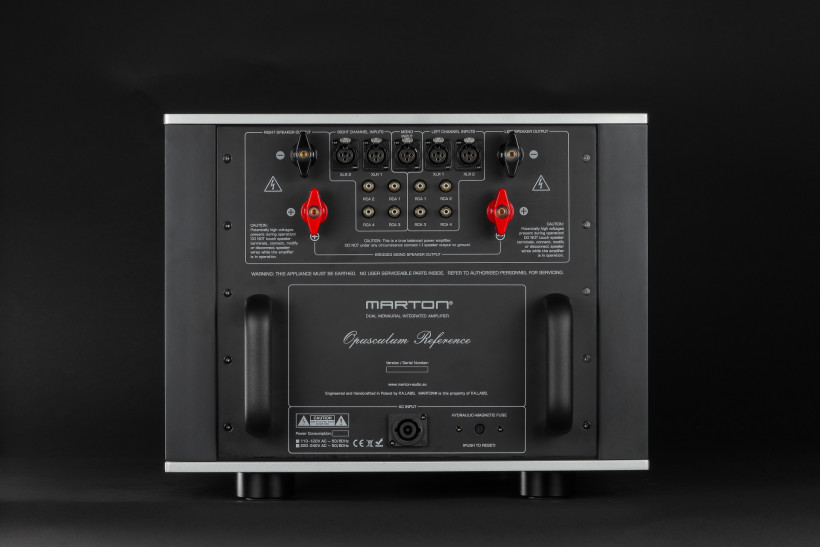
Sound
Well, I thought I was ready to assess Marton’s performance, but, as it ultimately turned out, I wasn’t. I mean not really, as it exceeded my expectations even though it was not that obvious from the start. But first thing first. Opusculum Reference 3 is a highly specialized device – it’s a pure amplifier that can operate in one of three modes – as integrated (and so it was reviewed) or as stereo or mono power amp. Mr. Knaga didn’t want to add any other on-board components to make sure, that Marton offers an utlimate performance. Also, it is designing amplifiers that is his true forte. To achieve his goal he made sure no corners were cut. As a result using Opusculum Reference 3 requires some patience. After turning it on for the first time (after it arrived) it took a long time, I mean several minutes, before we could start playing music. The on-board computer runs some start-up procedures and diagnostics checking if everything works as it is supposed to. Only then it gradually turns the device on, but it still has to achieve certain temperature before it is ready to operate. Don’t worry, after the first time in everyday’s use (assuming you will use standby mode) it will shorten to… a few minutes , which may be a bit annoying at first but you’ll get used to it. On the plus side it definitely teaches a man how to be patient.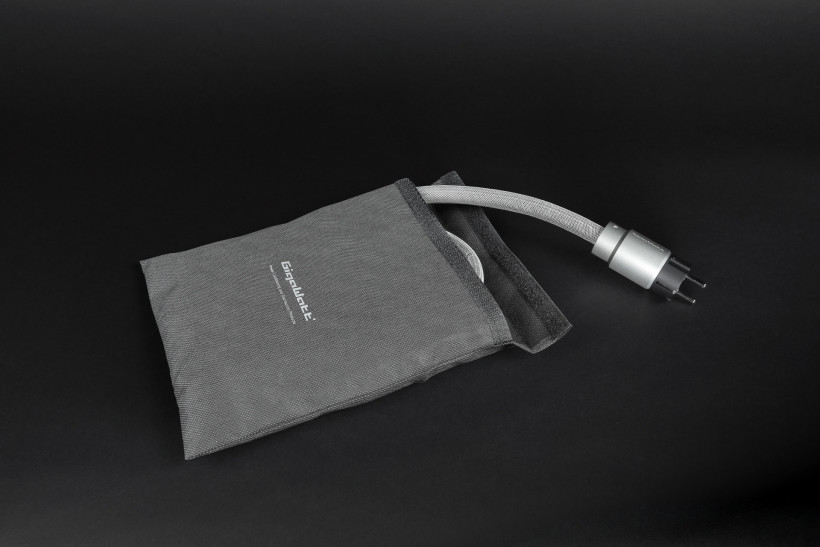 When the amplifier arrived together with Marton and Gigawatt crew, they wanted to listen to it for a while driving the Marten Mingus Quintet speakers, the most expensive pair at hand. Even though, the Polish amplifier needs several (I would say, minimum 30, maybe even more) minutes after turning it on, before it presents its top performance (after all, it delivers the first 50W in Class A), already the very first track indicated that it could be an amazing setup. As one expects from a powerful solid-state amp, the Marton wowed us with an incredible bass/lower midrange performance and dynamics. The extension, authority, power and excellent differentiation made quite a first impression. With time (after full warm-up) more advantages became obvious, such as high resolution, texture and tonal accuracy, remarkable timing, and fast, focused leading edge. All these features contributed to an outstanding performance that got better and better by the minute. Simply put, it already indicated, that Opusculum Reference 3 would probably make it to the short list of the very best amplifiers I’d ever reviewed. And it was just a beginning of this exciting musical adventure.
When the amplifier arrived together with Marton and Gigawatt crew, they wanted to listen to it for a while driving the Marten Mingus Quintet speakers, the most expensive pair at hand. Even though, the Polish amplifier needs several (I would say, minimum 30, maybe even more) minutes after turning it on, before it presents its top performance (after all, it delivers the first 50W in Class A), already the very first track indicated that it could be an amazing setup. As one expects from a powerful solid-state amp, the Marton wowed us with an incredible bass/lower midrange performance and dynamics. The extension, authority, power and excellent differentiation made quite a first impression. With time (after full warm-up) more advantages became obvious, such as high resolution, texture and tonal accuracy, remarkable timing, and fast, focused leading edge. All these features contributed to an outstanding performance that got better and better by the minute. Simply put, it already indicated, that Opusculum Reference 3 would probably make it to the short list of the very best amplifiers I’d ever reviewed. And it was just a beginning of this exciting musical adventure.
The reviewed Marton reminded me, for example, of the fantastic Tenor Audio 175S power amp in terms of bass quality. It was similarly powerful, rich, naturally weighty, but also perfectly punctual, fast, always on time, so to speak. Although it might have been even faster than Canadian competitor (without head-to-head comparison I can’t be certain). It was obvious that the reviewed amplifier executed a perfect control over the impressive Swedish speakers which translated into, as some would call it, a truly jaw-dropping experience. While I am not a „bass junkie”, meaning that’s not what I am primarily looking for in any audio component, this time I was wowed, even mesmerized listening to bass lines, whether by Marcus Miller jamming on his electric bass guitar or Ray Brown presenting his maestry playing a mighty double bass. It was not one of those cases, when I’m impressed at first, but in a longer run get bored or fatigued by the reviewed device. The bass range was powerful but also very well differentiated and controlled, and its character changed with every recording (as it should have), it was not monotonous. The Marton Opusculum Reference 3 followed the steps of few very best amps that I’d ever reviewed and allowed me to experience many of my favorite albums in a particularly deep and fun way. It was able to do that because while the presentation of the lower part of the range was so impressive, it did not dominate the whole performance. It just created sort of solid, powerful, yet precise foundation for all the music information in the midrange and treble area.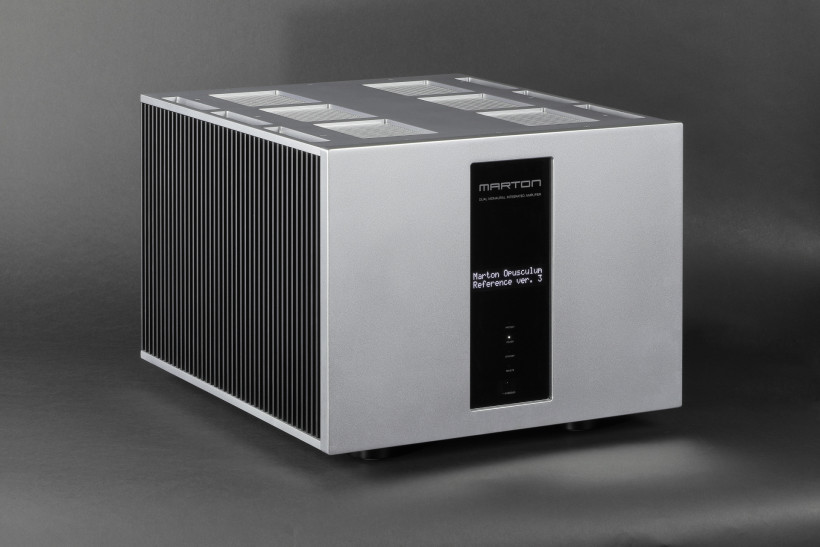 As much as the lower part of the band was responsible for the first impression, it didn’t take long until my attention was caught by the other band’s extreme. The Mingus Quintet speakers feature diamond tweeters. The resolution, transparency and purity of the treble they offer is therefore unique, simply breathtaking, maybe even unmatched by any other type of tweeter. While ceramic tweeters (which I am definitely not a fan of) also manage to wow many people with transparency and clarity, for me they often sound dry, rough and „lean”, if you know what I mean (they lack substance, richness, natural smoothness). The diamond tweeters outperform ceramic ones in, virtually, every possible aspect (hence the steep price of the former), with the key difference being how, at the same time, incredibly smooth, rich and natural they sound. I dare to say that a lot of (high quality) amplifiers, would be able to deliver an impressive bass performance with these Marten speakers but only the very best of them would manage to use these speakers full capabilities in the top end. The longer I listened to the Marton Opusculum Reference 3 the more convinced I was that this was one of the best amplifier I’d ever heard but not only due to its bass performance, but also to the way it was able to utilize these remarkable diamond tweeters in Martens. So while the bass and dynamics were the first wow factors, it was the treble that soon took the lead over as a the most distinctive and impressive feature of this setup. It was incredibly resolving, transparent, precise and open but also silky smooth, lush, refined, I’d even say – exquisite.
As much as the lower part of the band was responsible for the first impression, it didn’t take long until my attention was caught by the other band’s extreme. The Mingus Quintet speakers feature diamond tweeters. The resolution, transparency and purity of the treble they offer is therefore unique, simply breathtaking, maybe even unmatched by any other type of tweeter. While ceramic tweeters (which I am definitely not a fan of) also manage to wow many people with transparency and clarity, for me they often sound dry, rough and „lean”, if you know what I mean (they lack substance, richness, natural smoothness). The diamond tweeters outperform ceramic ones in, virtually, every possible aspect (hence the steep price of the former), with the key difference being how, at the same time, incredibly smooth, rich and natural they sound. I dare to say that a lot of (high quality) amplifiers, would be able to deliver an impressive bass performance with these Marten speakers but only the very best of them would manage to use these speakers full capabilities in the top end. The longer I listened to the Marton Opusculum Reference 3 the more convinced I was that this was one of the best amplifier I’d ever heard but not only due to its bass performance, but also to the way it was able to utilize these remarkable diamond tweeters in Martens. So while the bass and dynamics were the first wow factors, it was the treble that soon took the lead over as a the most distinctive and impressive feature of this setup. It was incredibly resolving, transparent, precise and open but also silky smooth, lush, refined, I’d even say – exquisite.
It might seem that I’ve forgotten about midrange or that there was some issue there. Don’t worry, I haven’t and there wasn’t. Simply, while on the one hand it is the midrange that our ears are most sensitive to – that’s how we are wired – on the other mid-tones, that actually carry the very essence of every music, are (almost) never as impressive as bass and treble. I mean, when presented accurately they do not wow listeners so easily as the range’s extremes, at least not at first. This part of the band attracts our attention rather when there is something wrong with it, not when it is excellent. That’s why I focused on bass and treble first. I’m willing to bet that most people who will listen to Marton Opusculum Reference 3 paired with some top level speakers will agree with me. Same as me, they will firstly notice outstanding bass performance, explosive dynamics and, if speakers allow it, also the remarkably clean, resolving and yet smooth and natural treble. Only then they will, as I did, turn their attention to the midrange and maybe start nitpicking for any weaknesses of this solid-state amplifier. I tried my best but I didn’t really find any objective ones. Sure, it wasn’t the same, meaning as palpable, three-dimensional and present as with some top tube amplifiers, particularly SET ones, say, from Kondo, AirTight or AudioTekne. It was excellent though, but more neutral sounding. Which in case of a top solid-state amp is a good thing. Let me explain.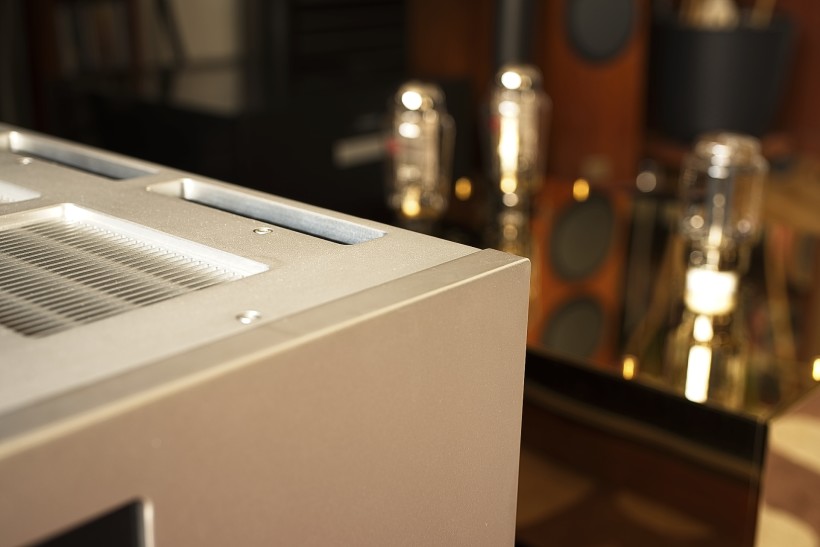 While I am a huge fan of SET amplifiers myself, of the way they focus listener’s attention on the lush midrange, I can still objectively admit, that more neutral sounding performers, such as Marton, while not as charming, not as easy to get excited about (still talking about midrange) offer performance that is actually closer to the truth of the recording, to the idea of high fidelity. That’s what the reviewed amplifier does incredibly well – it presents tracks for what they are, for good and for bad. It makes great recordings sound remarkably well – real and convincing, and the poor ones… well, not easy to truly enjoy, but that’s what they are. Fortunately, while being so objective, such a stickler to the high fidelity rules, the Opusculum Reference 3 is not a super-analytical type, that dissects recordings. It provides a lot of information about them, but focuses or should I say, focuses listener’s attention on the music. The genre doesn’t really matter as it allows all instruments and vocals to sound not only true but also natural. While the “center of gravity” of the presentation seems to be placed quite low, there is no actual coloration or any emphasis in the sound. It is just based on uniquely solid bass foundtion. So while on the one hand it was able to knock me off my feet with the power and dynamics of an orchestra, it also amazed me with a delicate, sublime sound of Stradivarius violin or powerful yet remarkably refined and beautiful voice of the great Luciano Pavarotti in whole of its glory. I had lots of fun listening to Aerosmith and AC/DC rocking on, but also to acoustic blues played by Muddy Waters, or the latest album by Rodgrigo y Gabriela acoustic guitar duo. Simply – it’s not just a remarkably well-sounding amplifier it is also an all-rounder capable of playing any music in a engaging, highly enjoyable way.
While I am a huge fan of SET amplifiers myself, of the way they focus listener’s attention on the lush midrange, I can still objectively admit, that more neutral sounding performers, such as Marton, while not as charming, not as easy to get excited about (still talking about midrange) offer performance that is actually closer to the truth of the recording, to the idea of high fidelity. That’s what the reviewed amplifier does incredibly well – it presents tracks for what they are, for good and for bad. It makes great recordings sound remarkably well – real and convincing, and the poor ones… well, not easy to truly enjoy, but that’s what they are. Fortunately, while being so objective, such a stickler to the high fidelity rules, the Opusculum Reference 3 is not a super-analytical type, that dissects recordings. It provides a lot of information about them, but focuses or should I say, focuses listener’s attention on the music. The genre doesn’t really matter as it allows all instruments and vocals to sound not only true but also natural. While the “center of gravity” of the presentation seems to be placed quite low, there is no actual coloration or any emphasis in the sound. It is just based on uniquely solid bass foundtion. So while on the one hand it was able to knock me off my feet with the power and dynamics of an orchestra, it also amazed me with a delicate, sublime sound of Stradivarius violin or powerful yet remarkably refined and beautiful voice of the great Luciano Pavarotti in whole of its glory. I had lots of fun listening to Aerosmith and AC/DC rocking on, but also to acoustic blues played by Muddy Waters, or the latest album by Rodgrigo y Gabriela acoustic guitar duo. Simply – it’s not just a remarkably well-sounding amplifier it is also an all-rounder capable of playing any music in a engaging, highly enjoyable way.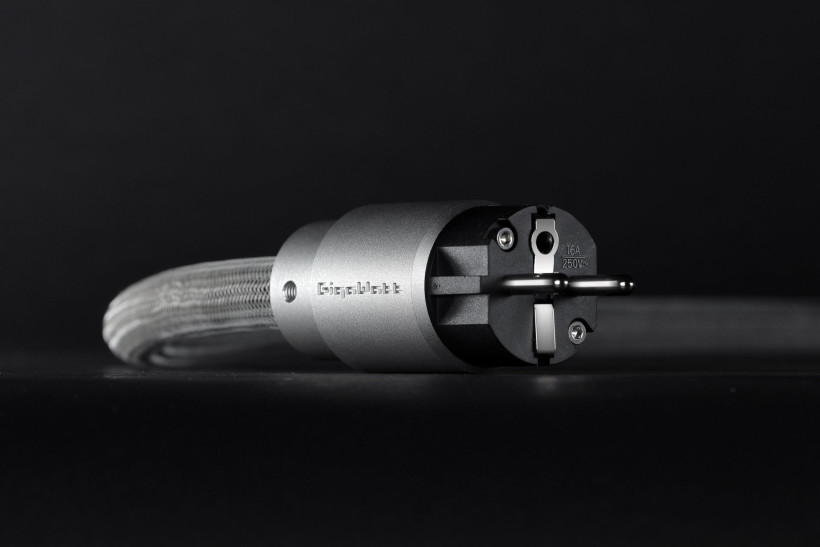 Later on I confirmed all my findings while listening to Marton using also other loudspeakers and sources at hand. Both pairs of speakers I use in my reference system, Ubiq Audio Model One Duelund Edition and GrandiNote MACH4 proved, that Marton rather focused on using system’s/speakers’ advantages than tried to impose its own character. With Model One bass was almost as deep as with Martens but bit faster, more focused, powerful but with no signs of any exaggeration, while with Swedish speakers there was a hint of bass-reflex operation, just a bit of this „umphh…” at the end of lowest notes. Midrange with my speakers was in turn slightly warmer and richer, although not as transparent, not as revealing as with Mingus Quintet. The top end definitely was not as resolving as with diamond tweeters, but rich, fast and crisp, as it should be. The MACH4 do not go as low as both above mentioned pairs of speakers, but the differentiation, clarity, speed and dynamics are astounding. Marton Opusculum Reference 3 did not try to add any extension nor weight to the lowest bass. Again, it used the advantages of Italian speakers and made them shine like only few other (mostly tube) amplifiers ever had before.
Later on I confirmed all my findings while listening to Marton using also other loudspeakers and sources at hand. Both pairs of speakers I use in my reference system, Ubiq Audio Model One Duelund Edition and GrandiNote MACH4 proved, that Marton rather focused on using system’s/speakers’ advantages than tried to impose its own character. With Model One bass was almost as deep as with Martens but bit faster, more focused, powerful but with no signs of any exaggeration, while with Swedish speakers there was a hint of bass-reflex operation, just a bit of this „umphh…” at the end of lowest notes. Midrange with my speakers was in turn slightly warmer and richer, although not as transparent, not as revealing as with Mingus Quintet. The top end definitely was not as resolving as with diamond tweeters, but rich, fast and crisp, as it should be. The MACH4 do not go as low as both above mentioned pairs of speakers, but the differentiation, clarity, speed and dynamics are astounding. Marton Opusculum Reference 3 did not try to add any extension nor weight to the lowest bass. Again, it used the advantages of Italian speakers and made them shine like only few other (mostly tube) amplifiers ever had before.
Whatever the speakers, coherence, flow and timing was impecable. There was no coloration in any part of the range, no emphasis, no elements imposed by the reviewed amplifier. It was also the case with the wondeful ESA Credo Stone – paired with this amplifier they did prove all of their strengths I described in my review. I bet, that if I had written this review using Marton to drive Credo Stone, the text would have actually been very similar to the one you can find on HiFiKnights. Maybe I would have been even more delighted with their performance, as (I believe) Opusculum Reference 3 allowed them to fully spread their wings. I don’t know about you, but I truly appreciate amplifiers that do not try to impose their sonic signature on the whole system. The latest Marton product is definitely one of the top ones of that kind and likely the best solid-state integrated that I ever hosted in my listening room.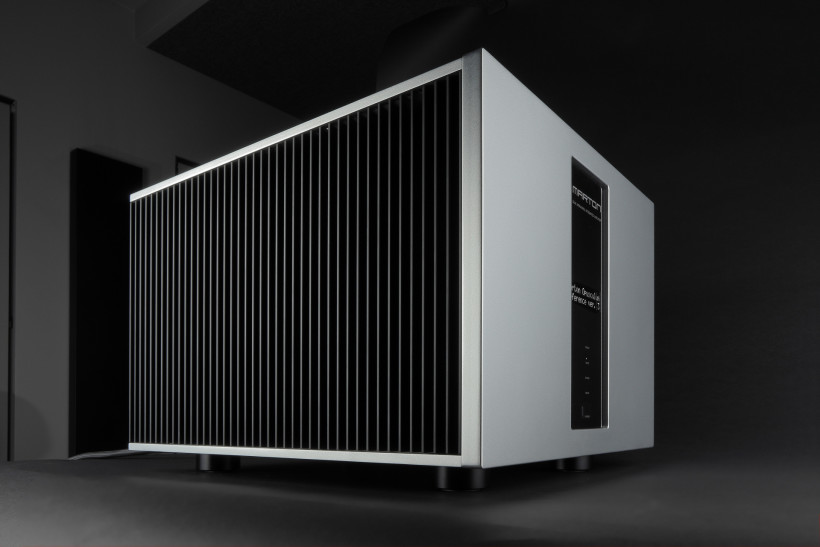
Summary
So, is it a perfect amplifier? There is no such thing, as any experienced audiophile will tell you. The best ones offer countless advantages and few minor, often subjective trade-offs. Mr. Knaga’s key goal was to create as neutral sounding amplifier as possible and I believe he did a fantastic job. The massive output will allow Marton Opusculum Reference 3 to drive any speakers with ease. What’s more, the Polish amplifier will allow them to keep their own sonic character and push them hard so that they can perform at their best. The sound with this amplifier should be fast, dynamic, powerful and yet refined, precise, accurate, with fabulous timing. It will be highly enjoyable no matter what music genre you prefer. But creating so neutral sounding integrated amplifier also means that if you’re looking for SET-like warmth, palpability, Marton probably won’t be your first choice. You should realize though, that to play it in such a way SET amplifiers tend to add some coloration to the sound. It may be an amazingly pleasing coloration, but still a coloration, a departure from high fidelity idea. That’s not what Marton Opusculum Reference 3 is about. It will deliver truth, the whole truth and nothing but the truth about any recording you will throw at it. It won’t add or loose any information. The sound of instruments and vocals will be acccurate, engaging and natural, encouraging you to spend countless hours listening to you favorite music without any fatigue. So it’s a matter of individual choice – if you like warm, palpable, present presentation and don’t mind some sound coloration pick one of the top SETs up for your pleasure. But if you’re the: truth, the whole truth and nothing but the truth kind of guy, who wants to enjoy, not dissect music, the reviewed Marton Opusculum Reference 3 is one of the best choices there are on the market regardless of the price range.
It leaves me no choice but to award it with a fully deserved Victor! Technical specification (according to manufacturer):
Technical specification (according to manufacturer):
- Mains voltage: 220-240 VAC 50/60 Hz or 110-120 VAC 50/60 Hz
- Output: 2 x 400 W (8 Ohm), 2x 800 (4 Ohm) @ 0.1 % THD
- Output (Bridge): 1 x 1600 W (8 Ohm) @ 0.1 % THD
- Class A output: 2 x 50 W
- Frequency range: 10Hz – 120kHz +/- 1dB
- Input sensitivity: 1,5V
- Gain: +26dB
- Speaker loading: 4 – 16 Ohm
- Minimal loudspeaker impedance while amp in bridge mono mode: 4 Ohm !!!
- Power consumption in standby: around 0,3 W
- Ambient temperature range: 5 – 32 o C
- Dimensions: 475 mm (W) x 565 mm (D) x 382 mm (H)
- Weight: 95kg (net), 120 kg (packed)
Price (when reviewed):
- Marton Opusculum Reference 3: 69.000 EUR
Manufacturer: MARTON-AUDIO
Associated equipment:
- Analogue front end: J.Sikora Standard MAX turntable, J.Sikora KV12 tonearm , AirTight PC-3, phonostages: Grandinote Celio mk IV, ESE Lab Nibiru V 2.5
- Digital source: a passive, custom PC with WIN10, Roon, Fidelizer Pro 7.3, JCat USB Femto card with iFi power supply, Hdplex linear power supply for PC, JCAT USB Isolator
- D/A Converter: LampizatOr Golden Atlantic +Ideon Audio 3R Master Time (USB signal regenerator), LampizatOr Pacific
- Power amplifier: GrandiNote Shinai
- Preamplifier: Audia Flight FLS1
- Loudspeakers: Ubiq Audio Model ONE Duelund Edition. GrandiNote MACH4, ESA Credo Stone, Marten Mingus Quintet
- Interconnects: Hijiri Million, KBL Sound Red Corona, Metrum Lab Edge, TelluriumQ Silver Diamond USB, Stavessence USB Eunoia and Apricity, Ethernet Eloquence
- Speaker cables: LessLoss Anchorwave, Metrum Lab Edge, KBl Sound Red Corona
- Power cables:LessLoss DFPC Signature, Gigawatt LC-3, KBL Sound Red Corona, Metrum Lab Edge
- Power:Gigawatt PF-2 MK2 and Gigawatt PC-3 SE Evo+; a custom power line with Gigawatt LC-Y in-wall cable; Gigawatt G-044 Schuko and Furutech FT-SWS-D (R)
- Racks: Base VI, Rogoz Audio 3RP3/BBS
- Anti-vibration accessories: ROGOZ-AUDIO SMO40 and CPPB16 platforms and ROGOZ AUDIO BW40MKII feet, Franc Accessories Ceramic Disc Slim Feet and Wood Block Platform



